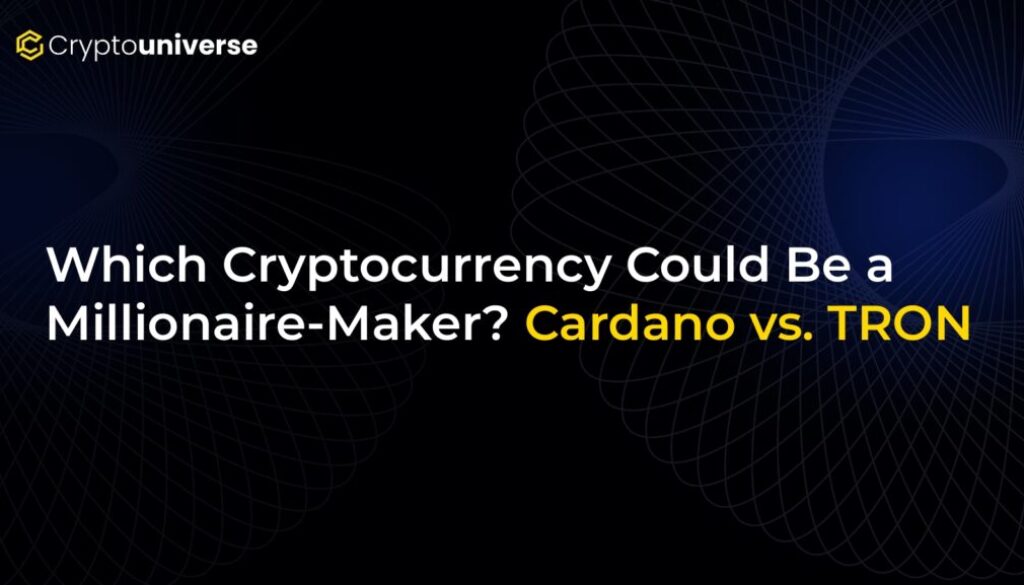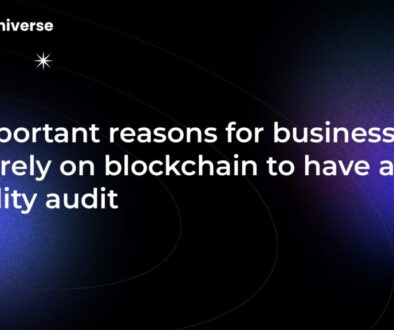Which Cryptocurrency Could Be a Millionaire-Maker? Cardano vs. TRON

The Hunt for the Next Crypto Millionaire-Maker
Every crypto investor dreams of finding that one digital asset that delivers life-changing returns—the elusive “millionaire-maker.” Among the thousands of projects, two established players, Cardano (ADA) and TRON (TRX), often come up in conversation. However, these two blockchains could not be more different in their approach, technology, and real-world adoption.
TRON has carved out a niche as a low-cost, high-speed network for everyday payments, primarily for stablecoins. In contrast, Cardano positions itself as a meticulously engineered, third-generation blockchain built on a foundation of academic, peer-reviewed research. The big question is: does either have the potential to deliver the explosive growth needed to turn a modest investment into a fortune? Let’s dive into a detailed comparison of Cardano vs. TRON to find out.
TRON (TRX): The Controversial King of Stablecoins
What is TRON’s Core Value?
TRON’s mission is simple and effective: move digital money, specifically dollar-pegged stablecoins, as quickly and cheaply as possible. It has become the de facto superhighway for Tether (USDT), the world’s largest stablecoin. This has given TRON a powerful and undeniable product-market fit in a critical sector of the crypto economy.
The Bull Case: Unmatched Real-World Usage
The numbers speak for themselves. TRON’s network activity is impressive and demonstrates genuine adoption:
- Stablecoin Dominance: The network hosts nearly $80 billion in stablecoins, with the vast majority being USDT. It is the leading blockchain for USDT value.
- Active Users: TRON boasts approximately 2.6 million daily active wallet addresses, a figure that dwarfs many of its competitors.
- DeFi Ecosystem: It secures over $6.4 billion in Total Value Locked (TVL) within its decentralized finance (DeFi) applications.
- Growing Revenue: The network generates substantial revenue from transaction fees, indicating sustained economic activity.
This level of usage means TRON is not a theoretical project; it’s a functioning, revenue-generating blockchain with millions of users who rely on it daily for fast, low-cost transactions.
The Bear Case: A High-Risk Profile
Despite its success, TRON faces two significant hurdles. First, its market capitalization is already substantial, sitting north of $30 billion. For TRX to create a millionaire from a $1,000 investment, it would need to grow 1000x—a near-impossible feat for an asset of its size. A more realistic 10x return would still require its market cap to swell to over $300 billion, a challenging prospect.
More importantly, TRON carries significant reputational and regulatory risk. According to some reports, the network is a favored platform for illicit activities and money laundering. While efforts are underway to cooperate with law enforcement and seize illicit funds, this association could make it a target for a sudden regulatory crackdown, posing a catastrophic risk to investors.
Cardano (ADA): The Academic’s Blockchain
What is Cardano’s Philosophy?
Cardano takes the opposite approach to TRON’s “move fast and break things” ethos. Founded by Ethereum co-founder Charles Hoskinson, Cardano is built on a philosophy of methodical, peer-reviewed development. Every feature and upgrade is rigorously researched and tested before implementation, with a strong emphasis on security, sustainability, and formal verification. This makes its smart contracts, in theory, more secure and auditable.
The Bull Case: A Foundation Built to Last
Cardano’s greatest strength is its technological foundation. By using the Haskell programming language and focusing on a scientific approach, it aims to create a blockchain that can support high-stakes applications like national identity systems, financial infrastructure, and complex supply chain management without the risk of exploits common on other platforms. For long-term investors, this focus on security and correctness is a powerful selling point.
The Bear Case: Where is the Adoption?
For all its technical elegance, Cardano has struggled to attract users and developers at the same pace as its rivals. The metrics paint a starkly different picture from TRON:
- Low DeFi Activity: Its DeFi ecosystem has a TVL of around $373 million—a fraction of TRON’s and a drop in the ocean compared to Ethereum.
- Fewer Active Users: Daily active wallet addresses hover around 27,000, indicating a much smaller user base.
- Minimal Stablecoin Presence: The network hosts less than $40 million in stablecoins, highlighting its lack of traction in the payments sector.
The steep learning curve of its programming language and a slower development cycle have left it behind competitors like Solana, which offer higher speeds and larger, more vibrant application ecosystems. It’s not yet clear what specific problem Cardano solves better than its rivals in the eyes of the market.
The Verdict: Which Crypto Has More Potential?
Let’s be clear: neither TRON nor Cardano is likely to be a “millionaire-maker” for new investors today. Their large market capitalizations mean the days of 1,000x returns are almost certainly behind them. The question then becomes, which is a better investment for general wealth building?
If forced to choose, TRON gets the edge by a narrow margin. Its established use case, massive user base, and proven ability to generate revenue give it a clear and present value proposition. It serves a vital function in the crypto economy today. However, this comes with the heavy baggage of its association with illicit finance, a risk that cannot be ignored.
Cardano remains a long-term, speculative bet on quality and security eventually winning out. Its foundation is robust, but it has yet to prove it can attract the network effect needed to compete at the highest level. Until its ecosystem flourishes, it remains an investment in potential rather than proven performance.
Ultimately, while both are significant projects, investors seeking truly explosive returns may need to look towards smaller, earlier-stage projects—while understanding that the risks involved are exponentially higher.


